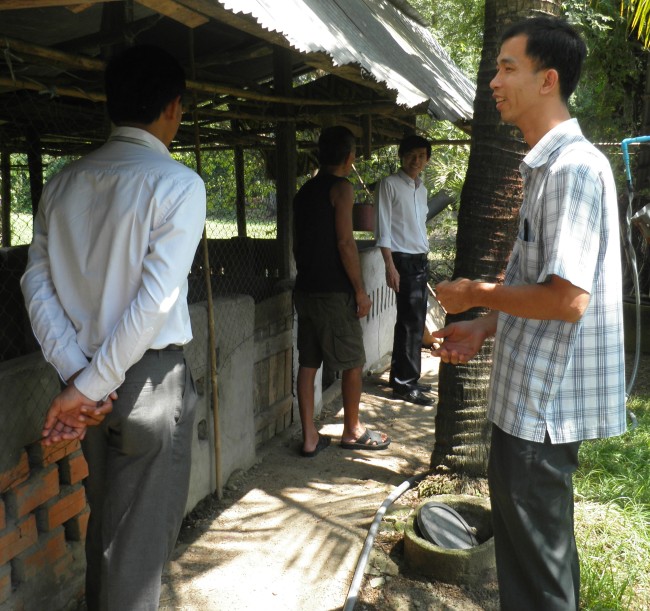At present, only 24% of the total households in Cambodia have access to electric power. Those outside the main grid are using wood, kerosene and batteries as sources of energy. These energy sources claim a substantial amount on the income of an ordinary household, not to mention its effect on the environment. Promoting clean energy like solar power is not new to Cambodia. The main reasons to this very low penetration rate are very limited technology information and the cost of the solar home systems (SHS). People tend to shy away from SHS because of the view that it is expensive and hard to maintain. The cost of ordinary SHS although “cheap” by standard measures is quite high from the perspective of ordinary people, especially those from the rural areas.
Most MFIs are still reluctant to participate in the initiative for the main reason that they have no control over the technology. Break down of low quality SHS units reflect on the MFI which may also lead to high defaults that will eventually affect the bottom line of the institution. Another reason is that adding marketing functions will affect the regular work of the credit staff. MFIs do not want to see the performance of their field staff declining because of the extra efforts diverted to selling SHS.
Thus, what is needed is a three-pronged approach to the problem. First, there should be a technology supplier who will provide SHS unit that is durable, simple to operate, with measures against unintended improper use. The units should have enough stored power for the normal use of a rural household and it should be durable enough to withstand years of continuous use, simple to operate and not expensive. It shall also maintain a team of technical people who will address problems in the SHS unit in a timely manner.
Second, it is necessary to have a marketing company that will conduct education and information campaign to the clients to ensure that they are aware of how to use and maintain SHS. It will maintain marketing and information teams who will go around rural communities doing education campaign. The marketing team will ensure that monitoring is continuously done and feedbacks are collated to improve after-sales service to end-users.
Finally, one of the most important is the financial services provider who will provide loans for those who will acquire SHS units. The MFIs will be focused in selecting the area for marketing and providing the necessary loan assessment and disbursement services.
The three-pronged approach is expected to capitalize on the strengths of each participating institution. A program was developed under this approach called Cambodian SUN (Solar energy Unlimited Nationwide).
Financing for acquisition of SHS under the Cambodia SUN program will be beneficial for the MFI for the following reasons:
- It can focus on what it does best – lending. Credit officers in the field will not be distracted with non-lending activities since it will be done by the supplier and the marketing and information companies;
- technical concerns and provision of maintenance will be handled by technical people from the supplier, while education and how-to-use sessions will be done by the marketing and information institution;
- the program can be considered as a social goal and a SOCIAL PERFORMANCE MANAGEMENT activity of the MFI;
- No need to have a new loan product since it can fall under existing individual loans provided by the MFI.
The potential of repeat transaction is there as other solar-based products can be provided for other purposes like enterprises and business activities.
Two main operational features of the Cambodian SUN build up on what where neglected by other suppliers. The first is the definition of a territory. The MFI partner will identify a province where it has substantial number of clients that are potential SHS users. The identification of a territory is necessary to ensure that there will be “critical mass” of clients so that the marketing campaign, the loan processing and the installation will be focused in a defined area. The clients will be adjacent to each other making after sales service more efficient. This will also prevent the MFIs participating in the program from directly competing with each other.
The second is a wide array of customer services that includes the following:
- guarantee on the most important parts of the SHS;
- regular maintenance visits of the technician on the 3rd, 9th and 18th month after installation;
- 24-hour call center for questions and problems;
- on-site technical support when the problem cannot be addressed by the call center.
- conduct of occasional training and education activities on solar and renewable energy
- collation and processing of feedback from clients
A defined territory and an excellent customer service will provide assurance to the clients that their investment in SHS will really last and they can depend on somebody if ever their units break down.


